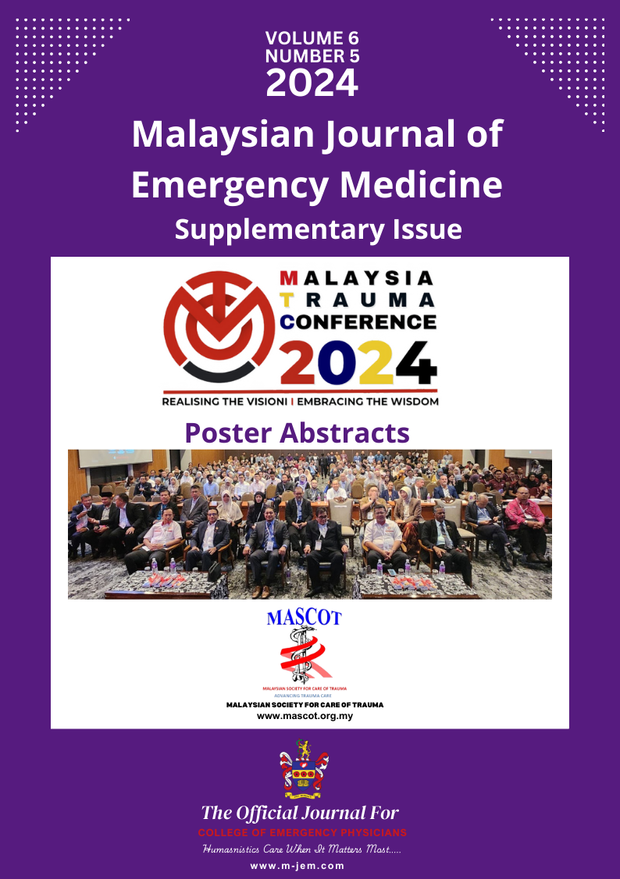A30 Traumatic And Shocking: Tackling Shock In Trauma, Beyond The Usual Mantra
Main Article Content
Abstract
INTRODUCTION
Shock in trauma typically arises from hemorrhagic causes, but other types of shock should also be considered as they may occur concurrently.
CASE DESCRIPTION
A 26-year-old male motorcyclist was involved in a high-impact motor vehicle accident and presented unconscious to a secondary hospital’s emergency unit. During primary survey, blood pressure was hypotensive with reduced air entry over the left lung however trachea was central. Needle thoracocentesis was performed afterwards without gush of air or blood. Subsequently, he was persistently hypotensive and bradycardic. The Glasgow Coma Scale (GCS) was 12 with unequal pupils. Further assessment revealed a deep laceration wound over the left iliac fossa with a negative Extended Focused Assessment Sonography in Trauma (E-FAST). He was resuscitated with crystalloids, given packed cell transfusion, started on inotropic support, and transferred to a tertiary hospital. Upon repeated primary survey, the patient was hemodynamically stable on inotropic support. Neurological examination revealed no spinal deformity or tenderness, but sensation and limbs power were significantly reduced. Secondary survey adjuncts revealed a missed C4 fracture on a cervical x-ray from prior care. CT head and spine were done which showed punctate bleed in the right parietal region, and C4 burst fracture with spinal canal displacement and retrolisthesis.
DISCUSSION
The patient experienced spinal and neurogenic shock. Initial suspicions included obstructive and hemorrhagic shock. A thorough systematic assessment in trauma patients is necessary to aid identification of life-threatening conditions and prompt urgent intervention. Clinical identification of tension pneumothorax, aided by ultrasounds, is crucial. Inappropriate blood transfusion can harm patients who do not need it.
CONCLUSION
Managing shock in trauma is challenging. Both primary and secondary surveys are vital to be done systematically, along with their respective adjuncts. Physicians should rapidly be considering multiple possibilities of shocks that may be occurring simultaneously in trauma patients unresponsive to initial treatments.
Metrics
Article Details

This work is licensed under a Creative Commons Attribution-NonCommercial 4.0 International License.

